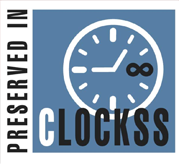Patient satisfaction survey on hemodialysis services in Central American countries
Santiago Torales, Comité de Economía en Nefrología, Sociedad Latinoamericana de Nefrología e Hipertensión (SLANH), Uruguay
Leticia Botta, Departamento de Investigación Clínica, Agencia de Evaluación de Tecnologías Sanitarias de Uruguay (AETSU) Departamento Montevideo, Montevideo, Uruguay
Florencia Rossi, Departamento de Investigación Clínica, Agencia de Evaluación de Tecnologías Sanitarias de Uruguay (AETSU) Departamento Montevideo, Montevideo, Uruguay
Diego Méndez, Departamento de Investigación Clínica, Agencia de Evaluación de Tecnologías Sanitarias de Uruguay (AETSU) Departamento Montevideo, Montevideo, Uruguay
Osman O. Gálvez-Chico, Departamento de Supervisión, Instituto Guatemalteco del Seguro Social (IGSS) Departamento Guatemala, Ciudad de Guatemala, Guatemala
Rogerio Urbina-Fonseca, Coordinador del Departamento Hemodiálisis, Hospital Bautista, Departamento Managua, Managua, Nicaragua
Harold Gil-García, Consultor Retainer en Área Nefrología, Oficina de Soporte de Proyectos de las Naciones Unidas (UNOPS) Departamento Morazán, Tegucigalpa, Honduras
Omar García, Consultor en Ingeniería Biomédica Proyecto INFRAIGSS, Oficina de Soporte de Proyectos de las Naciones Unidas (UNOPS) Departamento Guatemala, Ciudad de Guatemala, Guatemala
Objective: To administer and evaluate the results of a satisfaction survey for hemodialysis patients in 10 units in Guatemala, Honduras, and Nicaragua. Material and methods: A survey on 5 dimensions of satisfaction about hemodialysis services through 25 closed questions was conducted, assembled in a web form and distributed online to be completed voluntarily and anonymously. A descriptive statistical analysis on percentages of satisfied patients per question and weighted by dimension, complemented with analysis of associations by selected variables (country, hemodialysis shift, time in treatment, and need for caregivers) applying chi2 (statistical significance of p < 0.05), using Microsoft Excel® and Power BI® programs was implemented. Results: During September 2024, 1,601 responses were obtained (55.8% SD ± 28.9% participation rate per unit). 55.3% corresponded to patients < 50 years old; almost a third of respondents required caregivers in their daily activities; 66.4% had been on hemodialysis for > 2 years. The overall weighted average of satisfaction was 72.7% (SD ± 16.1%) . By dimension, the satisfaction rates were: communication and work environment (91.7%); care and training (75.6%); processes and services (70.4%); accessibility and delays (64.8%); and hygiene and facility conditions (64.5%). Staff kindness and willingness were highly recognized even amidst regional shortages of trained human resources in the region. Specific conditions related to infrastructure and processes were identified with differences that can be objectively determined in the analysis by variables. Conclusions: The findings reveals the importance and feasibility of obtaining direct information from patients, enabling the identification of specific dimensions of care and improving quality.
Keywords: Hemodialysis. Patient satisfaction. Continuous improvement of care.




